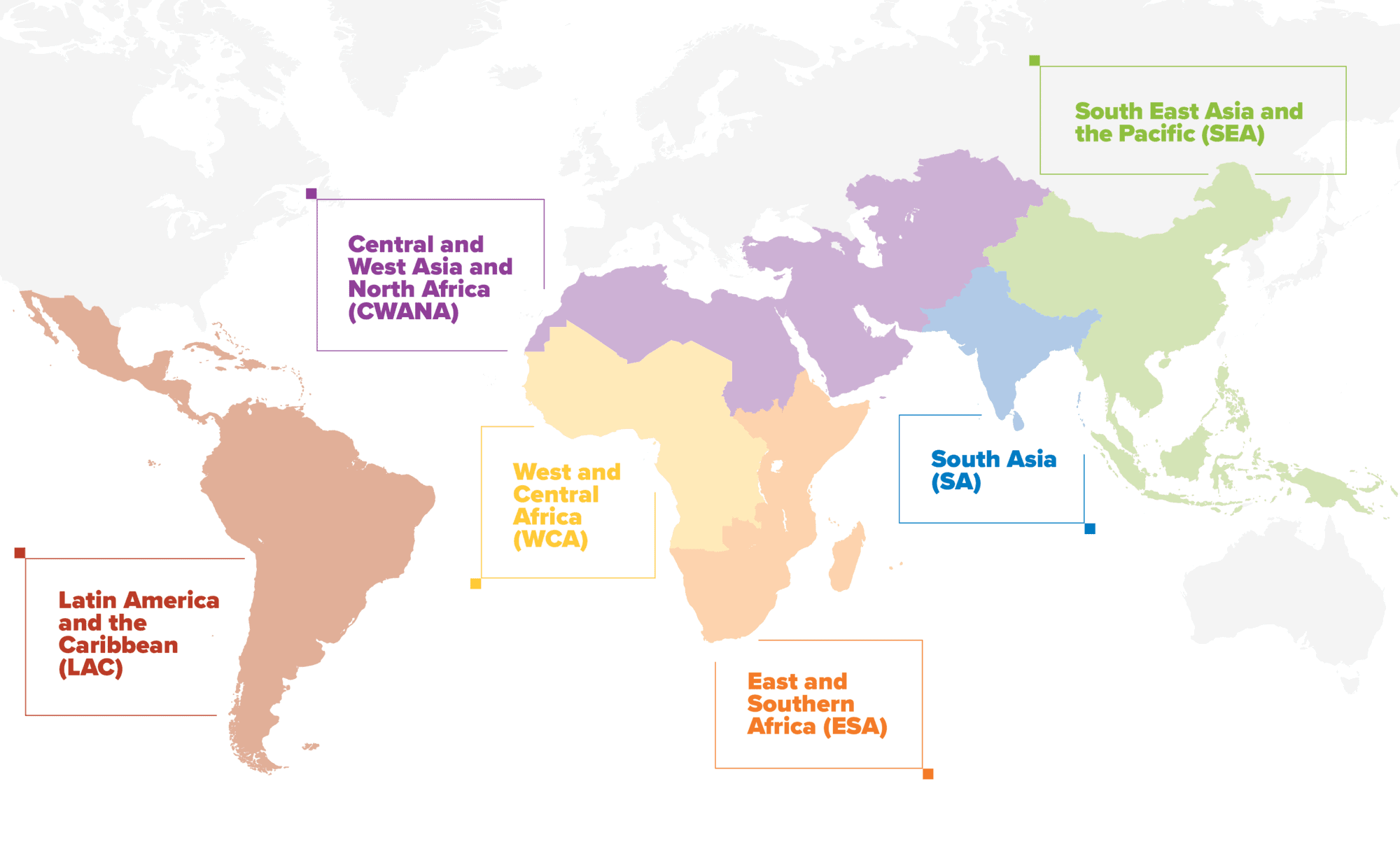
CGIAR works with partners in six major regions to jointly address challenges to food, land, and water systems. Challenges and risks to agriculture and fisheries, including those associated with a changing climate, vary across regions, and require solutions that are specific to them.
Through our 2030 Research and Innovation Strategy, Regional Integrated Initiatives have been formulated to address specific challenges in each of the six regions, connecting research and innovation at the regional level with the global CGIAR Portfolio. These interdisciplinary Initiatives are a key vehicle for co-design and co-delivery of innovation, capacity development, and policy change with regional partners, matching CGIAR capabilities to regional demand.
Our Regional Directors lead the engagement process, expanding and deepening partnerships to accelerate progress toward achieving the UN Sustainable Development Goals, and positioning regions, countries, and landscapes as central dimensions of our worldview and impact. One Regional Director has been appointed for each of the six CGIAR Regions.
In 2022, CGIAR will be adding a Regional Director for Continental Africa to serve as CGIAR’s counterpart to key continent-wide institutions, support resource mobilization and advocacy across the African continent, coordinate the work of the other three Regional Directors in Africa, and further strengthen the representation and voice of Africa-based and Africa-facing leaders.
The six CGIAR Regions are:
Central and West Asia and North Africa (CWANA)
As the most water-stressed region in the world, with annual average rainfall between 100 and 400 mm, climatic risks to water are the main constraint to agriculture-led development in this region, in both the highlands and in major deltas like the Nile.
In the wetter coastal and forested areas, hotter growing season temperatures and shorter rainy seasons are the key climate threats. In the drier Sahel, more frequent and severe droughts, including deadly dry spells within growing seasons, are driving changes in livelihoods, for example into livestock or out-migration to urban areas.
East and Southern Africa (ESA)
Agriculture has great potential as a driver of economic growth but is held back by sensitivity to climate change. The region faces a geographic patchwork of climate challenges, most commonly shorter and more unreliable growing seasons, particularly in the more arid south.
Latin America and the Caribbean (LAC)
Shorter growing seasons, higher peak temperatures and flash floods pose key climatic risks in the Caribbean and the dry corridor across Guatemala, Honduras, Nicaragua, and El Salvador, threatening the livelihoods of millions. Widespread degradation of forests and pasture across the wider region exacerbates climate risks.
Rising temperatures, erratic monsoon rainfall, flooding, and sea-level rise are the top climate risks across this densely populated region. The major breadbasket of the Indo-Gangetic Plains faces huge water management and land degradation challenges.
Southeast Asia and the Pacific (SEA)
Key climate risks in Southeast Asia are flooding, sea level rise, and salinization. Coastal areas and major deltas — such as the Mekong and the Irrawaddy — are particularly at risk, as they house dense populations of people alongside vast areas of rich floodplain crop production, plus the mangroves that protect coastlines and provide breeding grounds for fisheries.
